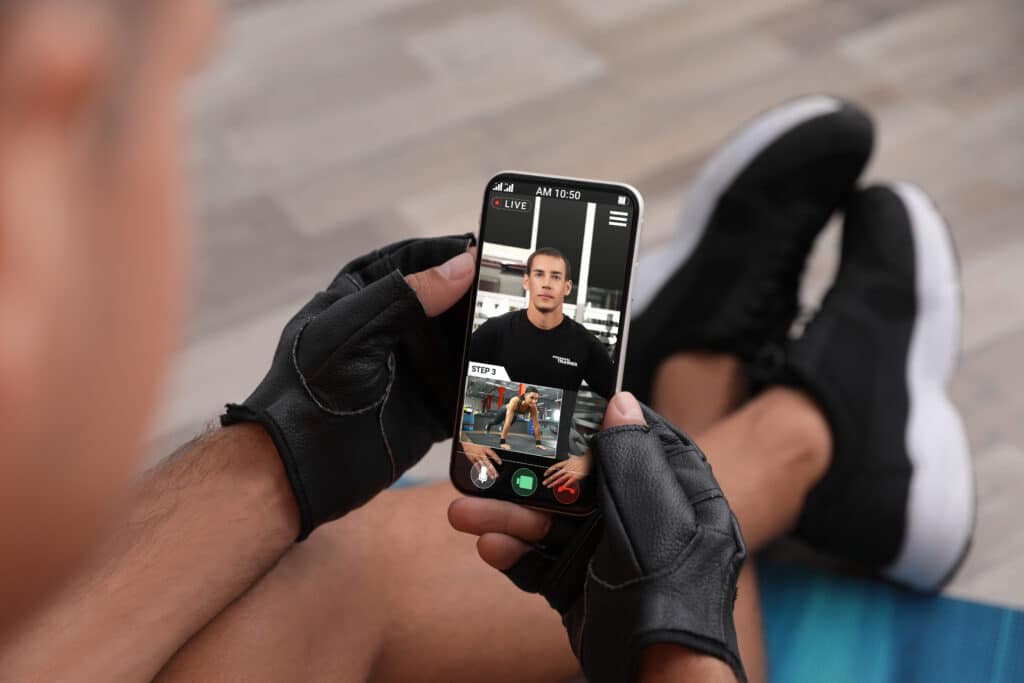by Jonah Cockshaw, Founder of FITMEDIA
What we’ll be covering in this session
In this session, we’ll be covering:
👉🏼 The 6 Customer Acquisition Channels
👉🏼 What is ‘Organic’ Marketing?
👉🏼 The 5 C’s of Organic Marketing
👉🏼 The Only 3 Posts You Should Share Online
👉🏼 Key Metrics to Track (+ free tracking sheet)
👉🏼 Tools You Can Use to Streamline / Automate this
The 6 Customer Acquisition Channels
Organic Marketing is just one of the 6 key Customer Acquisition Channels, so what are the others?
- Organic Marketing (this presentation)
- Paid Advertising (next week’s presentation)
- Partnerships / Referrals / Affiliates
- Manual Outbound
- Contact Lists (usually your email list; a bi-product of other marketing efforts)
- Word of Mouth (the only channel that can compound)
It’s worth making a note of these so that you don’t feel as boxed into only focusing on organic and paid marketing. The others can be extremely powerful and (sometimes) easier to get traction with. Very few people talk about this. 🙂

What is ‘Organic’ Marketing?
Organic Marketing is essentially just FREE marketing. It includes the posts you share on Facebook, Instagram, YouTube and so on. These platforms don’t charge you a penny for sharing content. It’s free to share as much or as little as you like. Any engagement, growth, leads and / or sales you see on the back of this marketing will also, therefore, be totally free (organic).
The 5 C’s of Organic Marketing
As with everything in business, if you can focus your efforts into an easy-to-follow formula then you’ll immediately feel less lost
- Content
The first ‘C’ is for Content. This pertains to your output for posts on your social media channels. We’ll dig into this a little more in a moment.
- Comments
There’s a marketing quote that says “Comments are the currency of social media”. Comments are widely considered to be the most influential form of engagement as far as the ‘algorithm’ is concerned. They also make for a great conversation opener (the third ‘C’).
You want to gear your content towards generating more comments from the most engaged segment of your audience.
- Conversations
When someone comments on your post, it often means that they’re actively interested in the topic you’re talking about. Perhaps your content is touching on a problem or limiting belief they have struggled with. Their comment can then be viewed as them ‘opting in’ to having more of a conversation with you via DM.
You can reach out and the conversation could look like this…
“Hey, I saw your comment on my post about X. Is this something you’re struggling with at the moment?”
“Have you tried anything to fix / improve this before?”
“What’s worked / not worked for you?”
“Many of my clients have had this same problem and are seeing great results. Would you be open to a quick no-pressure chat to see if I can help you too?”
This could be a whole training in itself so I won’t go super in-depth here, but you want to keep the ‘vibe’ natural, whilst putting an emphasis on actually wanting to know if you can help.
The call to action should be an easy step to take from where they are in their ‘customer journey’ with you at the moment. A quick call (15 mins) often works really well.

- Calls
As you begin to book people in for calls, you’ll find yourself developing better relationships with them much quicker than you would via DM or in the comments section of your content.
These calls will help you quickly determine whether or not you can actually help someone, whilst also giving them an opportunity to learn more about your offer.
If you do opt for a 15 minute initial call, then I’d encourage you to schedule a second 30-45 minute call with people who you feel are in a good position to benefit most from your service. On these longer calls you’ll dive into the details of how you can help them, and also discuss things like payment options.
Ideally, you’ll be seeing a good closing rate on these second calls. However, not everyone will be in a position to make decisions right away.
- Clients
Need I say more? 😉
A certain percentage of your calls will be successful. A conversion rate of 20-50% is generally considered pretty good.
As you convert calls into clients, you’ll see money hit your bank account and you’ll have new opportunities to generate some awesome success stories and client testimonials (to feed directly into your ‘top of funnel’ marketing on social media.
The Only 3 Posts You Should Share Online
As we’ve discussed, the first of the five C’s is Content… So how do you know which content you should share? What kind of posts should you focus on? How can you make this easy?
Well, we’re going to get into that now. 🤫
- Personal – 5-10%
Personal Content is the first kind of content that you should incorporate into your organic marketing. This will give people the opportunity to get to KNOW you as a human first, and as a trainer / coach second.
- Value – 40-50%
Since you’re in the business of helping people improve their physical and mental health, valuable content will account for the largest portion of your total content output.
These posts should answer questions, discuss topics of interest and further establish yourself as an expert and thought leader in your niche.
This content will increase how much people LIKE you, because you’re actively helping them (for free!)
- Social Proof – 40-50%
This is the biggest missing link in most social media strategies. If you aren’t already, I’d highly encourage you to share more social proof, client successes, testimonials, transformations, case studies and so on.
Doing this will increase how much people TRUST you. The proof is in the high-protein pudding, right?
I’ve put an emphasis on the words KNOW, LIKE and TRUST because they’re the underlying ingredients that lead to someone having a conversation with you, scheduling a call and deciding to pay for your services. If they don’t know you, like you or trust you then they’ll never give you their money.

Key Metrics to Track
As the old saying goes, “you can’t manage what you don’t measure”. That’s why I’ve also put together this tracking sheet.
This will allow you to track the conversations, calls and clients you’re generating on a daily and weekly basis. It will also calculate the conversation rates between conversations and calls, as well as calls to conversations.
How many of your conversations are actually booking calls? And how many calls end up converting into cash? This sheet will tell you.
Get a copy here: KPI Tracking Sheet (click ‘File’ -> ‘Make a Copy’)
In addition to using this tracking sheet, I’d also encourage you to keep an eye on the analytics associated with each of your social media accounts. If you’re using Instagram, make sure it’s set up as a ‘Business’ or ‘Professional’ account, rather than ‘Personal’.
Focus less on follower growth (although it is always cool to see this increase), and focus more on engagement growth. Pay attention to which posts get high(er) engagement rates (comments and conversations) and lean into producing more of those posts.
Automation Tools for your Social Media
Using tools and software can make almost all areas of your business easier to manage and scale. The same is true for your social media posting. If you haven’t already looked into automating and streamlining your social media content then I encourage you to take a look at these two tools right now:
- Buffer.com
Buffer is a great tool for managing profiles across Facebook, Instagram, LinkedIn, Twitter and more. It has a generous free plan that allows you to manage up to 3 profiles at once. Beyond that, pricing starts at $12/profile/month.*
* This is accurate at the time of writing this content. For current pricing, please visit https://buffer.com/pricing
- Facebook Creator Studio
Facebook offers a powerful suite of publishing tools for business pages (not personal profiles) that will replace the need for something like Buffer, but with one drawback… Facebook’s Creator Studio will currently only allow you to publish to Facebook and / or Instagram. If you use other platforms, you’ll need to use Buffer (or something similar).
If you want to make that path quicker and easier to market to your clients, check out all the client management tools that we offer here at My PT Hub. Or, better yet, try them out for yourself with a free 30-day trial starting today!